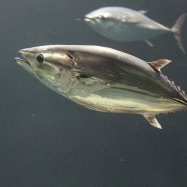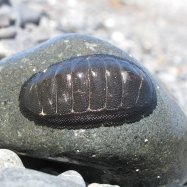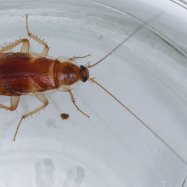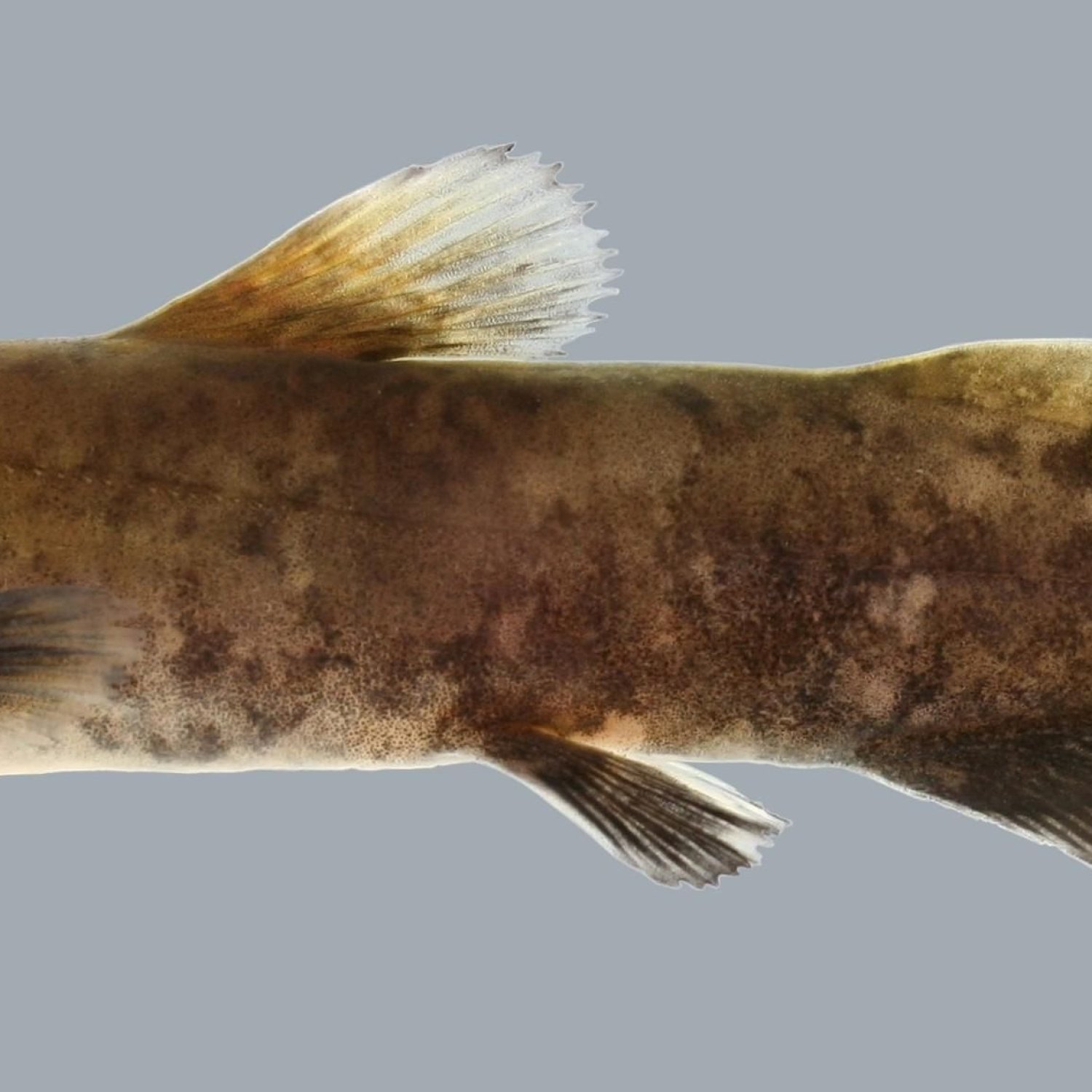
Flathead Catfish
Up to 4 feet (1.2 meters)
The Flathead Catfish, also known as the river monster, can grow up to 4 feet long and weighs over 100 pounds. They live in rivers, lakes, and reservoirs and belong to the Ictaluridae family. Their distinct flat and broad body shape makes them excellent bottom-dwellers and predators. Keep an eye out for this mighty creature on your next fishing trip! 🎣 #FlatheadCatfish #Ictaluridae #RiverMonster #Fishing
Animal Details Summary:
Common Name: Flathead Catfish
Kingdom: Animalia
Habitat: Freshwater
The Fascinating World of Flathead Catfish
Deep in the heart of America's freshwater rivers, lakes, and reservoirs, lurks a formidable creature that has earned its name as the king of the underwater kingdom. Say hello to the Flathead Catfish, the largest freshwater predator in North America. With its dark brown or olive coloration and unique body shape, the Flathead Catfish has captured the attention and fascination of fishing enthusiasts and researchers alike.In this article, we dive deep into the world of the mighty Flathead Catfish Flathead Catfish. We will explore its scientific name, physical attributes, habitat, behavior, and much more. So, strap on your fishing gear and let's dive into the fascinating world of the Flathead Catfish.
The Basics: Scientific Name and Classification
Scientifically known as Pylodictis olivaris, the Flathead Catfish belongs to the kingdom Animalia, the phylum Chordata, and the class Actinopterygii. It comes from the order Siluriformes, which comprises more than 3,000 species of catfishes. This large order is further divided into 41 families, and the Flathead Catfish belongs to the family Ictaluridae, also known as the "true" catfish family.Habitat and Geographical Distribution
The Flathead Catfish is a freshwater species native to North America, with its highest concentration found in the United States. They are commonly found in rivers, lakes, and reservoirs throughout the continent. These elusive creatures can be found in the Mississippi River system, the Great Lakes, and major river basins in the eastern half of the United States.Flathead Catfish are bottom-dwellers, meaning they prefer to stay close to the bottom of the water body, and they are highly adaptable to their surroundings Frog. They tend to inhabit areas with a lot of structure, such as logs, rocks, and underwater caves, where they can hide and ambush prey.
Physical Features and Body Shape
One of the most distinct features of the Flathead Catfish is its flat and broad head, from which it derives its name. This unique body shape allows it to blend seamlessly with the riverbed, making it an expert ambusher. Its body is elongated and laterally compressed, which helps it cut through the water with ease.Flathead Catfish can grow up to 4 feet in length, with some specimens reaching an impressive weight of 100 pounds. Despite its size, it can be quite difficult to spot in the murky waters, given its dark brown or olive coloration. They also have sharp spines on their dorsal and pectoral fins, which they use for self-defense.
Feeding Habits
The Flathead Catfish is a carnivorous species, and as such, it has a diverse diet consisting of a variety of prey items. Young Flathead Catfish mostly feed on aquatic insects and crustaceans, such as crayfish and small fish. As they grow, their diet shifts towards larger prey, and adult Flathead Catfish are known to feed on fish, amphibians, crustaceans, and even small mammals.One fascinating and unique feeding habit of the Flathead Catfish is "gaping." This involves opening their large mouth wide and creating a vacuum to suck in prey. This technique is useful for catching larger prey, and it also helps them hide from larger predators.
Behavior and Mating
Flathead Catfish are typically solitary creatures, and they prefer to live and hunt alone. They are nocturnal, meaning they are most active at night, making them even more elusive to spot. However, during the spawning season, which typically occurs in late spring or early summer, Flathead Catfish become more active and can be seen moving around in search of a mate.During mating, male Flathead Catfish build nests by sweeping away debris and creating shallow depressions on the riverbed. They then attract females to lay eggs in their nests, which they will fiercely defend from intruders. Once the eggs hatch, the male will continue to guard the fry for a short period before they venture out on their own.
The Importance of Flathead Catfish
Flathead Catfish is a crucial species in the freshwater ecosystem. As predators, they play a significant role in regulating prey populations, maintaining a healthy balance in the food chain. They also contribute to the nutrient cycle by consuming and recycling dead organisms.Moreover, Flathead Catfish serves as an essential recreational and commercial fishery. They are a popular target for anglers, and many state wildlife agencies have implemented regulations and guidelines to manage their population sustainably.
The Threats and Conservation
The Flathead Catfish faces various threats in its natural habitat, from overfishing to habitat degradation. With its large size and ability to prey on other fish species, the Flathead Catfish can significantly impact native fish populations in an ecosystem if not managed properly.To ensure the sustainable management of Flathead Catfish populations, it is essential to implement regulations that limit overfishing and protect their natural spawning habitats. Additionally, conservation efforts must focus on reducing pollution and preserving the water quality in rivers, lakes, and reservoirs where these fish live.
Final Thoughts
The Flathead Catfish is a remarkable creature that has adapted and thrived in North America's freshwater ecosystems. With its unique physical features, diverse diet, and impressive size, it is no wonder they have captured the heart of fishing enthusiasts and researchers alike.While this species faces various threats, it is essential to recognize the critical role it plays in the freshwater ecosystem and take steps to ensure its sustainable management. So, the next time you spot a Flathead Catfish, take a moment to appreciate its magnificence and the important role it plays in nature.

Flathead Catfish
Animal Details Flathead Catfish - Scientific Name: Pylodictis olivaris
- Category: Animals F
- Scientific Name: Pylodictis olivaris
- Common Name: Flathead Catfish
- Kingdom: Animalia
- Phylum: Chordata
- Class: Actinopterygii
- Order: Siluriformes
- Family: Ictaluridae
- Habitat: Freshwater
- Feeding Method: Carnivorous
- Geographical Distribution: North America
- Country of Origin: United States
- Location: Rivers, lakes, and reservoirs
- Animal Coloration: Dark brown or olive
- Body Shape: Flat and broad
- Length: Up to 4 feet (1.2 meters)
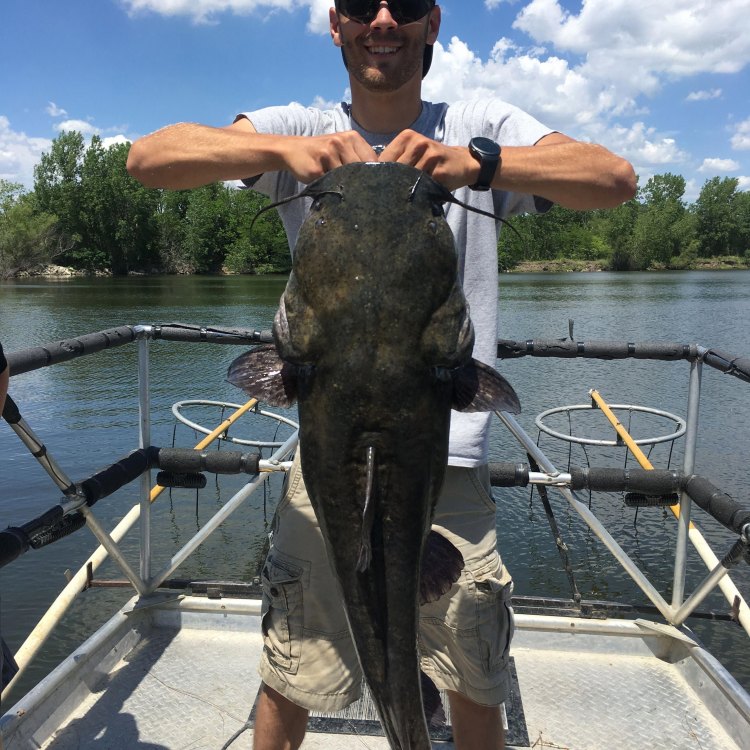
Flathead Catfish
- Adult Size: 20 to 30 inches (50 to 76 cm)
- Average Lifespan: 15 to 25 years
- Reproduction: Sexual
- Reproductive Behavior: Spawning
- Sound or Call: No specific sound or call
- Migration Pattern: No significant migration
- Social Groups: Solitary
- Behavior: Nocturnal and ambush predator
- Threats: Overfishing, habitat loss, and pollution
- Conservation Status: Least Concern
- Impact on Ecosystem: Top predator, plays a role in maintaining fish populations
- Human Use: Popular gamefish and commercial fishery
- Distinctive Features: Flat head, small eyes, and long anal fin
- Interesting Facts: Can live out of water for short periods of time
- Predator: Humans and larger predatory fish
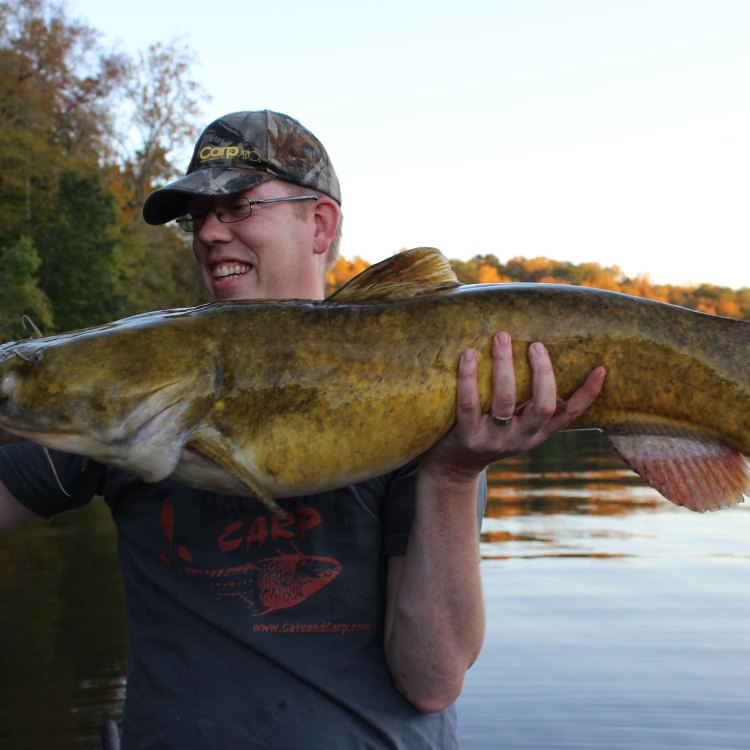
Pylodictis olivaris
The Mighty Flathead Catfish: A Unique Predator of Freshwater Ecosystems
In the rivers and lakes of North America, there is a formidable predator swimming beneath the water's surface. Its flat, broad head and long anal fin make it easily recognizable, earning it the name Flathead catfish. With an adult size that can reach up to 30 inches and an average lifespan of 15 to 25 years, these fish are not only impressive in appearance but also in their role in the ecosystem.Reproduction and Behavior
Flathead catfish are sexual reproducers and engage in the behavior of spawning PeaceOfAnimals.Com. This means that they require a mate and specific environmental conditions to successfully reproduce. The males will excavate a nest in the substrate of the river or lake bed and attract a female to lay her eggs there.Unlike some fish species that have a specific call or sound to attract a mate, flathead catfish do not. Instead, they rely on visual cues and behavior, such as circling and nudging, to communicate and attract a partner.
Once hatched, the young flathead catfish will spend the first two to three months of their lives guarding the nest with their father until they are strong enough to venture out on their own. It is during this time that they are especially vulnerable to predators and environmental threats.
Nocturnal and Solitary Creatures
Flathead catfish are known to be solitary creatures, preferring to spend their time alone rather than in social groups. They are also primarily nocturnal, meaning they are most active at night. This behavior is a result of their hunting strategy, which is to patiently wait for prey to swim by and ambush them Fulvous Whistling Duck. With their keen sense of smell and excellent camouflage, they can quickly and silently strike, making them efficient and effective predators.In addition to their predatory behavior, flathead catfish are also known for their unique ability to survive out of water for short periods. This is due to the presence of specialized gill structures that allow them to absorb oxygen directly from the air. This adaptation is thought to have evolved as a survival mechanism to help them survive in shallow, oxygen-depleted waters.
Threats and Conservation Status
Like many species of freshwater fish, flathead catfish face significant threats to their survival. Overfishing, habitat loss, and water pollution are the primary reasons for their decline in some areas. In fact, they have been listed as a threatened species in some states, such as Minnesota and Iowa.However, on a global scale, the conservation status of the flathead catfish is considered "least concern". This means that, while there are localized populations that are at risk, the species as a whole is not in danger of extinction.
Impact on Ecosystems
As top predators in their environments, flathead catfish play an essential role in maintaining the balance of freshwater ecosystems. They help regulate fish populations by controlling the numbers of smaller fish species, such as carp and suckerfish. This, in turn, helps maintain the overall health and diversity of the ecosystem.However, their large size, predatory behavior, and long lifespan can also have an impact on fish populations. In some areas, overfishing of flathead catfish for recreational or commercial purposes has resulted in a decline in fish populations and imbalances in the ecosystem. Therefore, proper management and conservation efforts are crucial to ensure the sustainability of flathead catfish populations and the ecosystems they inhabit.
Human Use and Distinctive Features
Flathead catfish are a popular gamefish and are sought after by recreational anglers for the thrill of catching such a formidable opponent. They are also commercially fished, mainly in the southern United States, and sold as food in markets and restaurants.Aside from their size and impressive hunting skills, flathead catfish are easily distinguishable by their unique features. Their flat, broad head and small eyes are well suited for their ambush hunting style, allowing them to remain undetected by their prey. Their long anal fin also helps with maneuvering and propulsion in the water.
Predators and Coexistence with Humans
In addition to being a predator themselves, flathead catfish also face threats from larger fish species and humans. Predatory fish such as alligator gar and muskellunge, as well as birds of prey, are known to feed on flathead catfish. Humans, particularly recreational and commercial fishers, are also a significant predator of these fish.However, despite being considered a threat to fish populations in some areas, humans and flathead catfish have managed to coexist for centuries. The Native American Osage tribe, for instance, has a long history of catching flathead catfish for food and using their skin for clothing and tools.
Conclusion
In conclusion, the flathead catfish is a unique and formidable predator of freshwater ecosystems. With their flat head, small eyes, and long anal fin, they are easily distinguishable and have adapted to be efficient and successful hunters. However, like many species of fish, they also face numerous threats to their survival, making proper management and conservation efforts crucial.As we continue to explore and understand the delicate balance of our natural world, it is essential to recognize the role that each species, like the flathead catfish, plays in maintaining the ecosystem's health and diversity. With proper conservation efforts and responsible human interaction, we can ensure that this resilient and impressive species will continue to thrive in our rivers and lakes for generations to come.
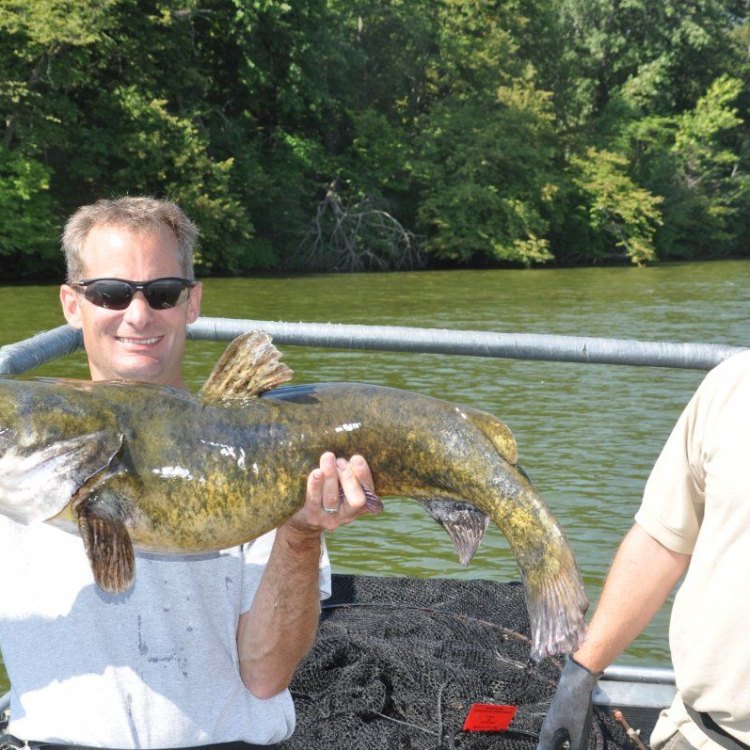
The Fascinating World of Flathead Catfish
Disclaimer: The content provided is for informational purposes only. We cannot guarantee the accuracy of the information on this page 100%. All information provided here may change without prior notice.


